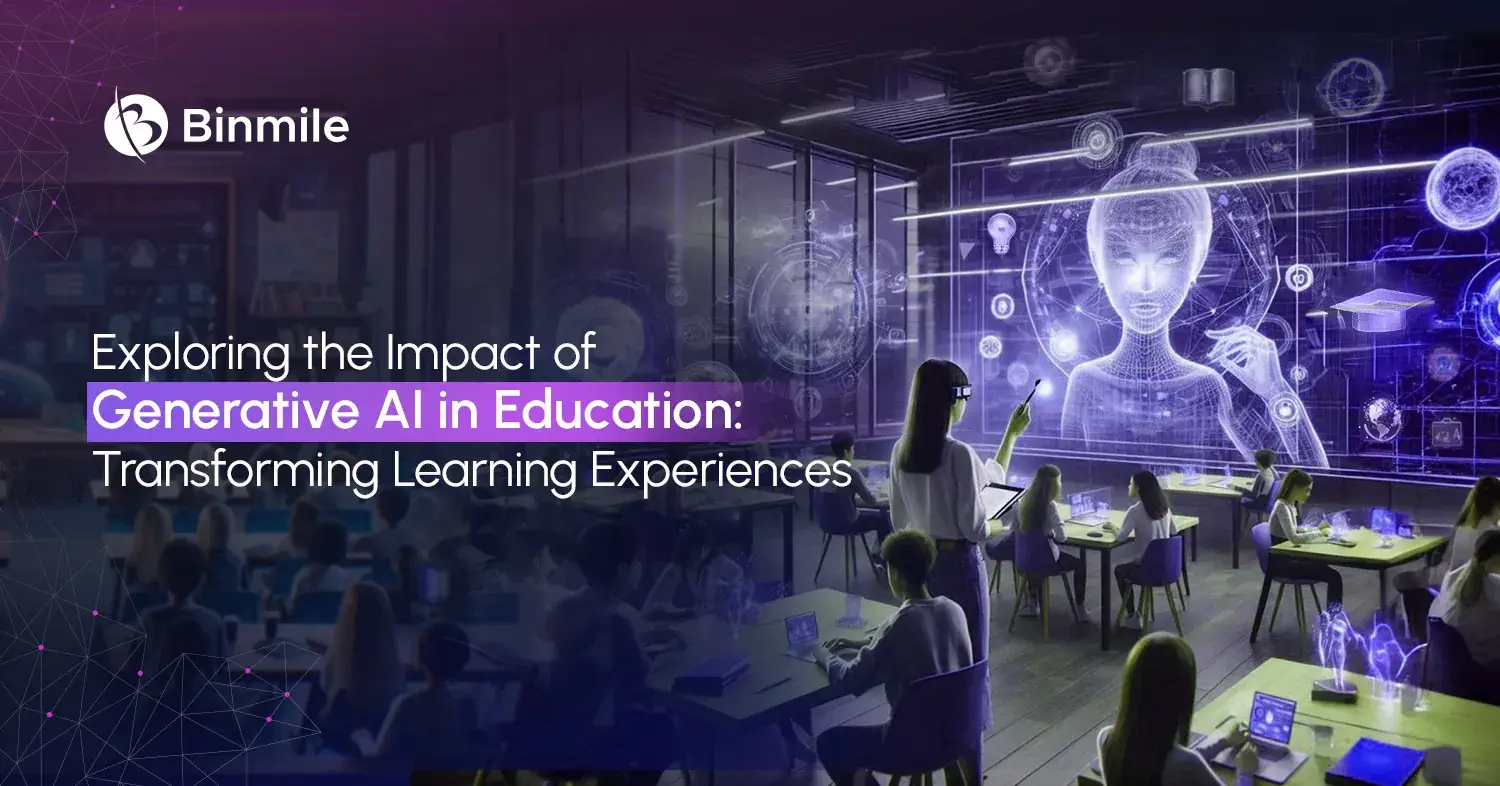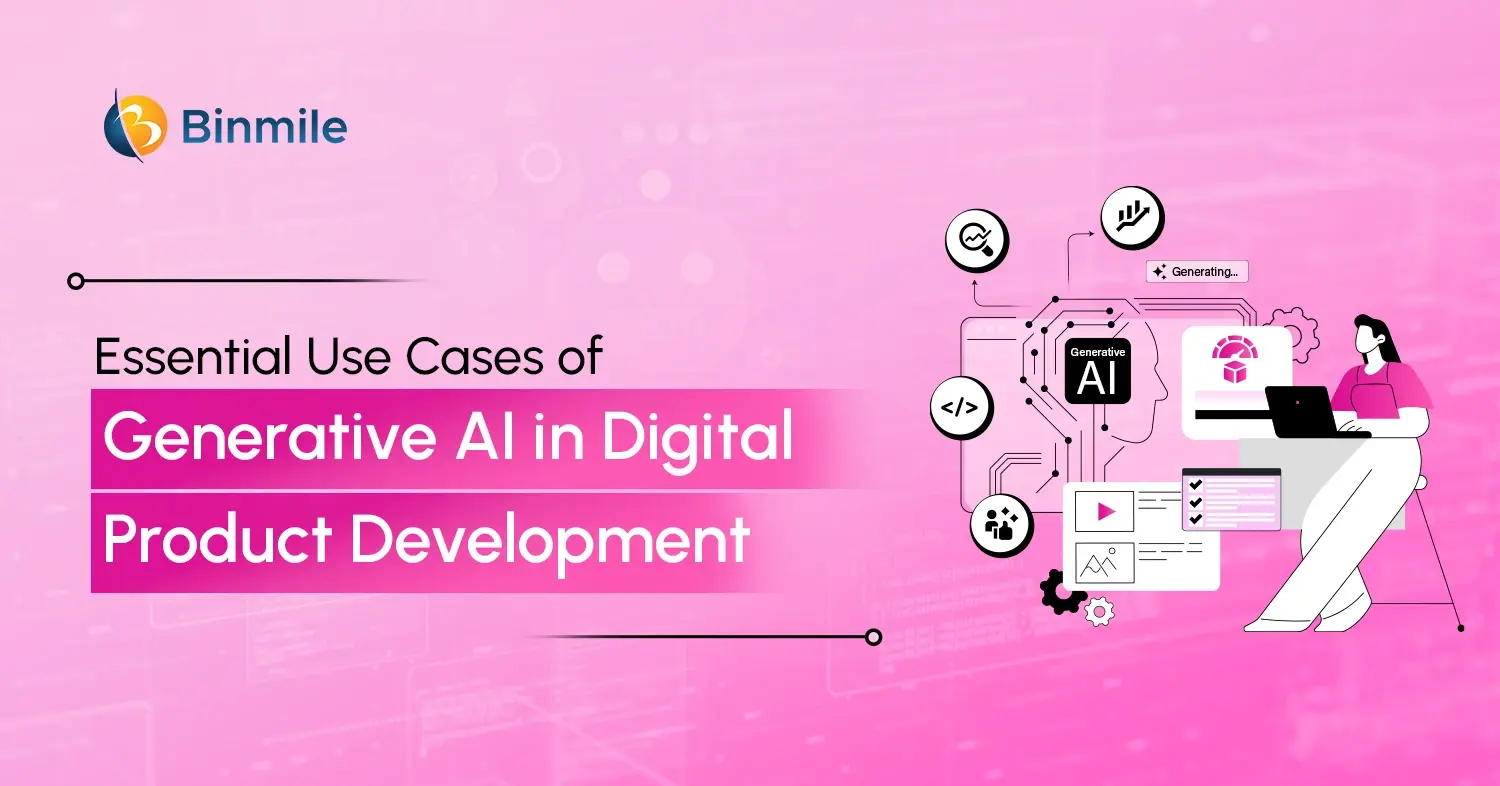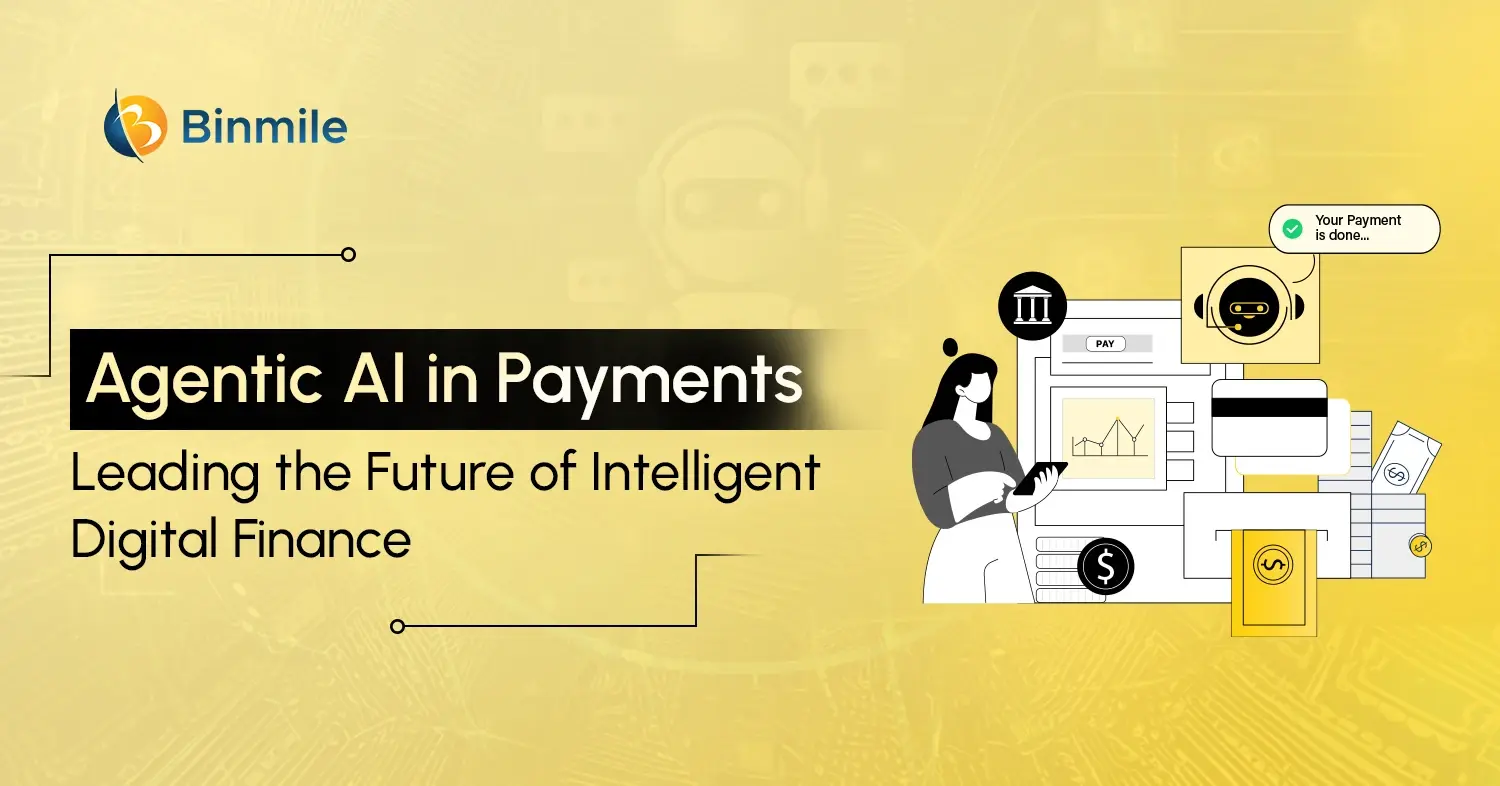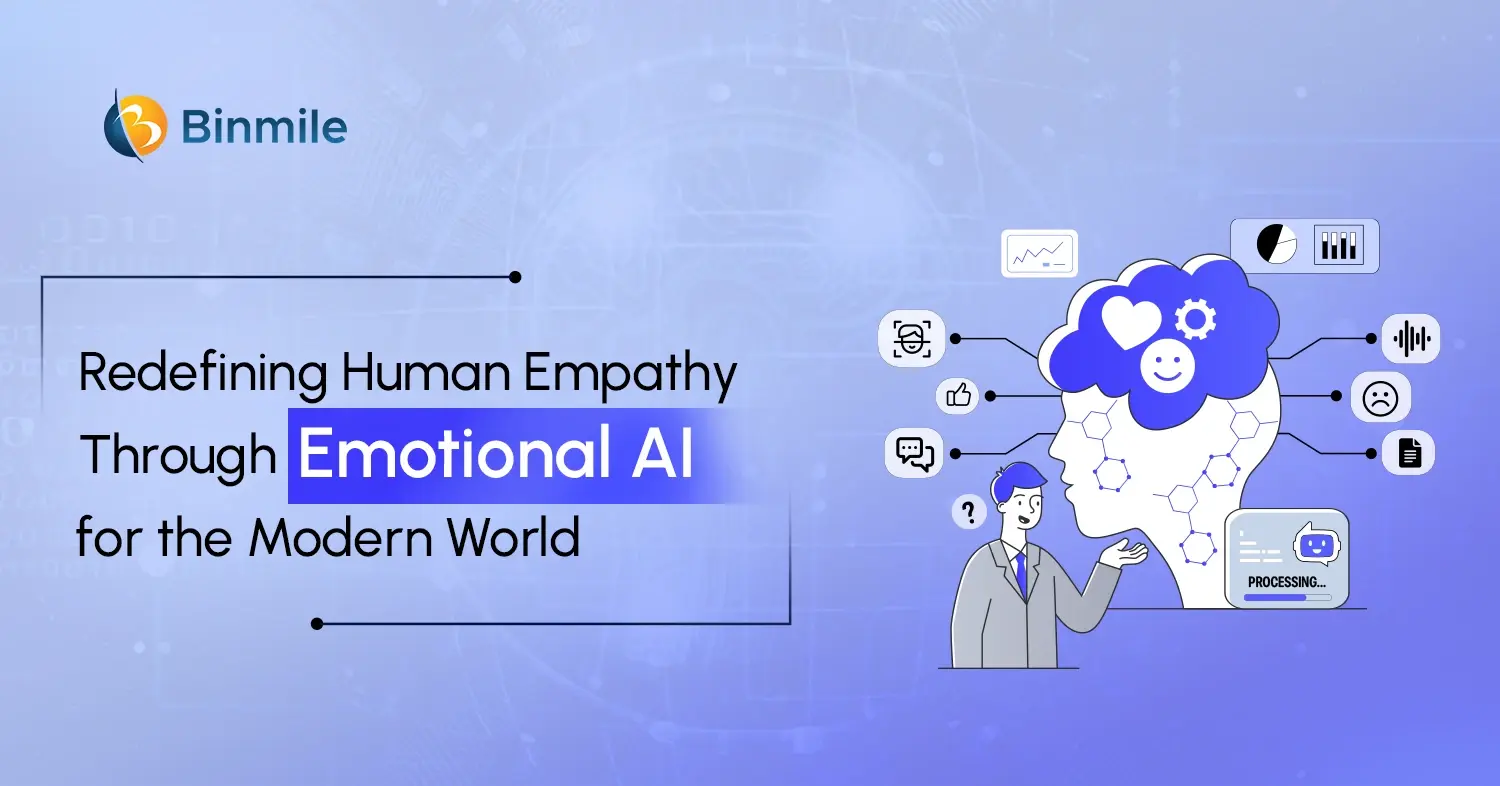Driven by the rapid advancements in technologies such as artificial intelligence, AR/VR, generative AI, or IoT, it is transforming the way we learn and teach. These technologies are making learning more accessible, interactive, and collaborative, especially generative AI in education. From crafting tailored learning experiences to automating tedious administrative tasks, this powerful tool that is capable of creating human-quality text, images, and code is modernizing and reshaping the educational landscape.
However, the integration of generative artificial intelligence is not without its complexities, as concerns about its ethical use and disparities in readiness among users are still obstacles to its wider adoption. create a nuanced tapestry of opportunities and obstacles. Therefore, in this blog, we dive into how generative AI in education is revolutionizing the sector, its diverse applications, and the multifaceted challenges associated with its adoption in education.
7 Ways Generative AI in Education is Transforming Learning Experiences
The education sector is experiencing a profound transformation through the integration of generative AI technologies. So, let’s understand seven key ways generative AI is making its mark in education.
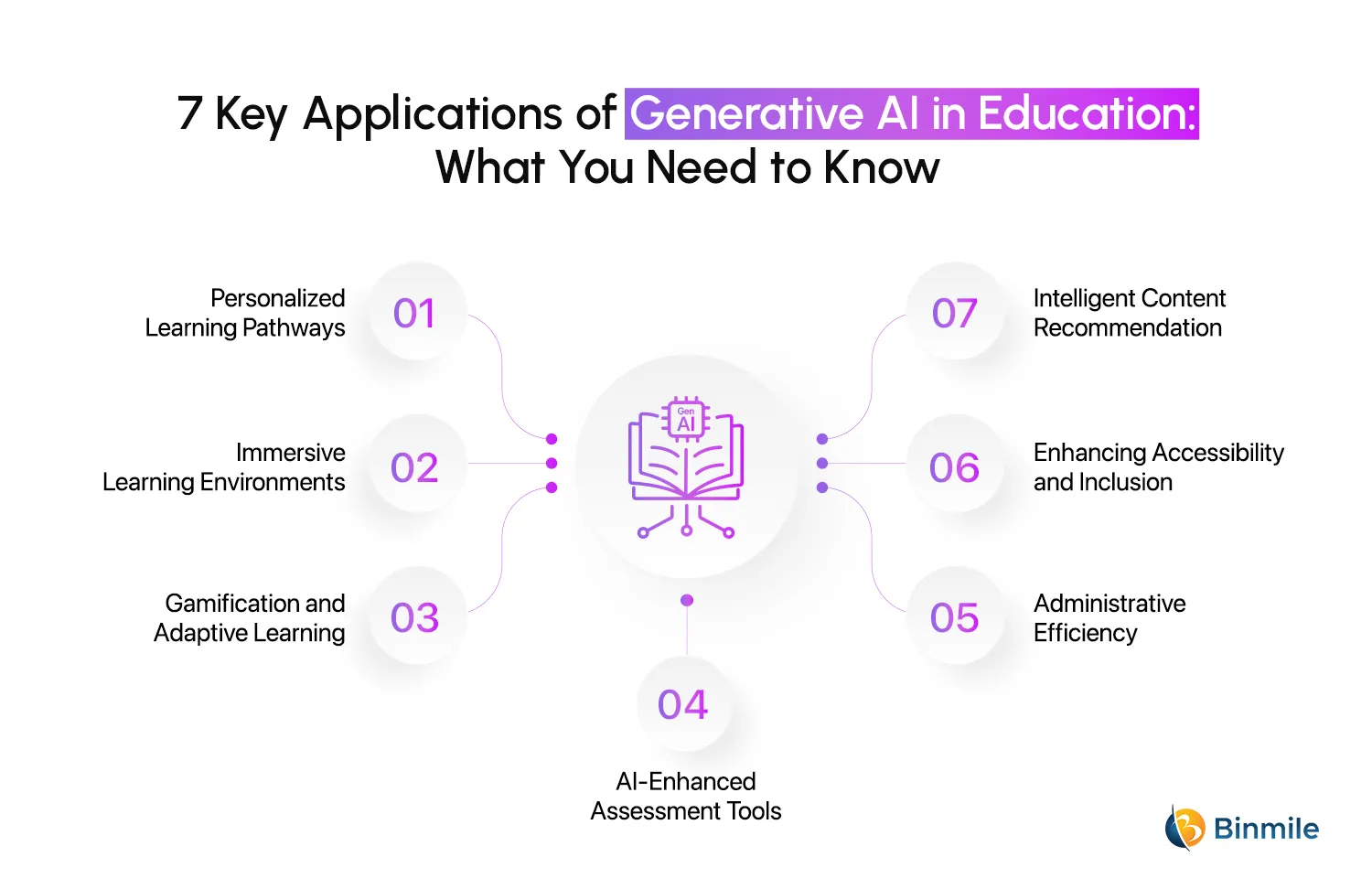
#1 Personalized Learning Pathways
Generative AI is revolutionizing the concept of personalized education by creating custom learning experiences tailored to each student’s needs. These sophisticated systems analyze individual learning patterns and identify knowledge gaps, automatically generating appropriate content and exercises. Consider a student struggling with algebraic concepts—the AI can create targeted practice problems and explanations that match their specific learning style and pace. This level of personalization was previously impossible to achieve at scale, but AI now makes it accessible to every student.
#2 Immersive Learning Environments
Integrating Virtual Reality and AI Integration can help educators develop learning environments that simulate real-world scenarios. For example, medical students can practice surgeries in a virtual setting, while history students can explore ancient civilizations, enhancing experiential learning. Many educational institutions are integrating generative AI into their platforms to create adaptive learning environments. These platforms analyze student interactions and progress, adapting content delivery and learning activities to better fit individual learning styles and paces.
#3 Gamification and Adaptive Learning
Leveraging generative AI, educators can create personalized gamified experiences that adapt to student performance and preferences. The importance of gamification in education lies in its ability to transform traditional learning into engaging and interactive experiences. This technology allows for the development of engaging learning environments where students progress through tailored levels and challenges that match their abilities. As generative AI analyzes individual performance data, it can dynamically adjust content and difficulty, ensuring that students are neither bored with tasks that are too easy nor overwhelmed by challenges that are too hard. This personalized approach not only enhances motivation and engagement but also fosters a sense of achievement through immediate feedback and reward systems, ultimately leading to improved learning outcomes.
#4 AI-Enhanced Assessment Tools
The time-consuming task of grading and assessment has long been a challenge for educators. Generative AI is transforming this aspect of education by providing comprehensive assessment capabilities. These systems excel at evaluating written assignments and delivering detailed, constructive feedback. They generate insightful progress reports that help teachers identify trends across their classrooms and spot common misconceptions. More importantly, they can suggest specific areas for improvement and create customized follow-up assignments that address individual student needs. This automation allows teachers to focus more on direct student interaction and educational strategy.
#5 Intelligent Content Recommendation
Integrating generative AI in learning management systems allows for intelligent content recommendations based on students’ learning histories and preferences. This means students receive tailored resource suggestions that complement their coursework, improving engagement and learning efficacy. The advent of AI-powered tutoring systems has revolutionized the concept of academic support. These systems function as round-the-clock learning companions, capable of engaging with students in natural language conversations. When a student encounters difficulty, the AI tutor can break down complex concepts into digestible components and provide step-by-step guidance. What sets these systems apart is their ability to adapt explanations based on student responses and offer multiple approaches to understanding challenging topics. This versatility ensures that every student can find a learning path that resonates with their understanding.
#6 Enhancing Accessibility and Inclusion
Generative AI can create inclusive content that reflects a variety of voices and experiences, allowing educators to tailor materials that resonate with all students and promote a sense of belonging within the classroom. Generative AI is breaking down barriers in education by making learning more accessible to all students. For visually impaired learners, AI systems convert text to natural-sounding speech, while deaf students benefit from accurate real-time captioning. The technology’s ability to translate educational content into multiple languages ensures that non-native speakers can access materials in their preferred language. Students with special needs find support through AI-powered assistive technologies that adapt to their specific requirements. This democratization of education through technology is creating more inclusive learning environments.
#7 Administrative Efficiency
The impact of generative AI extends beyond the classroom into educational administration. Smart scheduling systems now optimize resource allocation, while predictive analytics help manage enrollment patterns. Communication between parents and teachers has become more streamlined through AI-powered systems that can handle routine inquiries and updates. Administrators benefit from sophisticated data analysis tools that inform decision-making processes. This administrative efficiency translates into more time and resources devoted to actual education.
Transform your educational platform with customized AI solutions to enhance personalized learning & improve student outcomes.

Generative AI in Education: Challenges and Opportunities for the Future
So far, we’ve seen the way generative AI in education brings significant benefits to the way education is being delivered, taught, and learned. However, certain issues need equal attention. Primary of them is proactive mitigation of privacy and data security concerns while also ensuring the quality and accuracy of AI-generated content. Even though the integration of GenAI models into education systems may demand heavy investment in infrastructure or resources in training, over time, as the technology gets gradual acceptance and adoption, educators can seek partnerships with AI development companies or apply for grants.
Therefore, while generative AI brings tremendous potential to education, it’s important to remember that technology should enhance, not replace, human interaction in learning and must create equitable accessibility so that all learners can benefit from these innovations. Meanwhile, educators, businesses, and other major stakeholders must come together to ensure that there’s a fine balance between AI-powered tools and traditional teaching methods.
Bring your vision to life with bespoke app development services designed to create impactful educational experiences for learners.
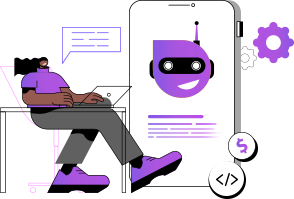
Closing Statement
As generative AI continues to evolve, its role in education will likely expand, offering even more innovative ways to improve teaching and learning outcomes. The key is to harness these technologies thoughtfully, ensuring they serve the fundamental goal of education: empowering students to learn and grow effectively. The transformation we’re witnessing is just the beginning of a new era in education, where technology and human expertise combine to create richer, more effective learning experiences for all.
However, the successful integration of this technology requires thoughtful implementation and a focus on ethical considerations. The major stakeholders, such as educators, policymakers, and technologists, must work together to responsibly harness the power of generative AI. After all, embracing this change is not just about keeping pace with technology; it’s about preparing future generations for a world where learning is more adaptive, accessible, relevant, and impactful than ever before.
